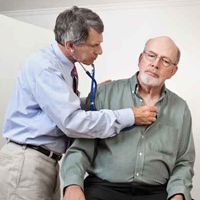Article
Exercise Can Last Longer with NIPPV in COPD Patients
Author(s):
The use of non-invasive positive pressure ventilation (NIPPV) can enhance the efficiency of pulmonary rehabilitation in patients with chronic obstructive pulmonary disease.

The use of non-invasive positive pressure ventilation (NIPPV) can enhance the efficiency of pulmonary rehabilitation in patients with chronic obstructive pulmonary disease (COPD), according to findings published in the journal CHEST.
Researchers from the Second Artillery General Hospital in Beijing, China, enrolled 20 severe COPD patients in an exercise study in order to determine whether this non invasive ventilation support during an exercise program for COPD patients would release dyspnea and increase activity tolerance. There were five types of exercises that each patient completed over a period of 16 days including walking on a treadmill. The patients completed a baseline test without ventilator support, while the first and second tests were done with the NIPPV nozzle. For the third and fourth tests, both the exercise and rest portions were done with the NIPPV total face mask.
The researchers also recorded data about the duration of the patients’ walks, distance walked, recovery time, heart rate, and respiratory rate during the exercise tests.
When the patients used NIPPV with pulmonary rehabilitation, their measures for shortness of breath and exercise tolerance improved.
“NIPPV can relieve shortness of breath during exercising quickly,” study author Dr. Boxue Han explained in a press release. “It can also enhance efficiency of pulmonary rehabilitation in stable COPD patients.”
“Noninvasive positive pressure ventilation can relieve shortness during exercising quickly and enhance efficiency of pulmonary rehabilitation in the stable COPD patients,” the study abstract concluded. “Average volume assured pressure support auto-EPAP (AVAPS-AE) mode may be more likely to improve the measures above, especially in synchronization and activity tolerance, worthy of promotion.”


